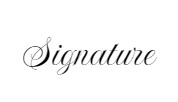Free Compliance Risk Audit Report Template
Compliance Risk Audit Report
Organization Name: [Your Company Name]
Audit Date: [Enter Audit Date]
Audit Team: [List Audit Team Members]
I. Executive Summary
-
The audit, conducted from [Audit Start Date] to [Audit End Date], aimed to identify and prioritize compliance risks within the organization.
-
The organization's compliance framework was reviewed, revealing strengths and areas for improvement.
-
Key findings include:
-
Identified [Number] high-risk compliance areas.
-
[Percentage]% of current compliance processes were found to be effective.
-
[Number] areas were identified for immediate improvement.
-
-
Recommendations are provided to enhance compliance processes and procedures.
II. Introduction
-
[Your Company Name] is committed to compliance and risk management to ensure operational effectiveness and regulatory adherence.
-
This audit seeks to identify and prioritize compliance risks to enhance the organization's compliance program.
-
Objectives include assessing the effectiveness of current compliance processes and providing recommendations for improvement.
III. Compliance Risk Identification
-
Compliance risks identified include:
-
Lack of employee training on compliance policies.
-
Inadequate monitoring of compliance with regulatory requirements.
-
Insufficient documentation of compliance activities.
-
-
Risks were assessed based on likelihood and impact, with high-risk areas prioritized for immediate attention.
-
The prioritization process involved reviewing historical compliance data and consulting with subject matter experts.
IV. Compliance Process and Procedure Review
-
Current compliance processes and procedures were reviewed, focusing on:
-
Employee training programs.
-
Monitoring and reporting mechanisms.
-
Documentation practices.
-
-
Effectiveness was evaluated based on compliance with regulatory requirements and internal policies.
-
Areas for improvement include:
-
Enhancing employee training programs.
-
Implementing automated monitoring tools.
-
Improving documentation practices.
-
V. Regulatory Compliance Demonstration
-
Evidence of compliance with regulatory requirements was provided for:
-
GDPR (General Data Protection Regulation): Provide documentation of data protection policies, data processing agreements, and records of data breaches.
-
HIPAA (Health Insurance Portability and Accountability Act): Provide documentation of patient data protection measures, including access controls and data encryption.
-
-
Non-compliance issues were identified in:
-
Lack of data protection policies and procedures.
-
Inadequate access controls for patient data.
-
-
Corrective actions recommended include:
-
Developing and implementing data protection policies and procedures.
-
Implementing access controls and data encryption measures.
-
VI. Recommendations
-
Develop and implement a comprehensive compliance training program.
-
Enhance monitoring and reporting mechanisms to ensure timely identification of compliance issues.
-
Conduct regular audits and assessments to assess compliance status and effectiveness of controls.
VII. Conclusion
-
The audit has identified key areas for improvement in the organization's compliance program.
-
Recommendations are provided to enhance compliance processes and procedures.
-
Continuous monitoring and improvement are essential to ensure ongoing compliance with regulatory requirements.
VIII. Signatures:

Audit Team Leader: [Your Name]
Date: [Date Signed]